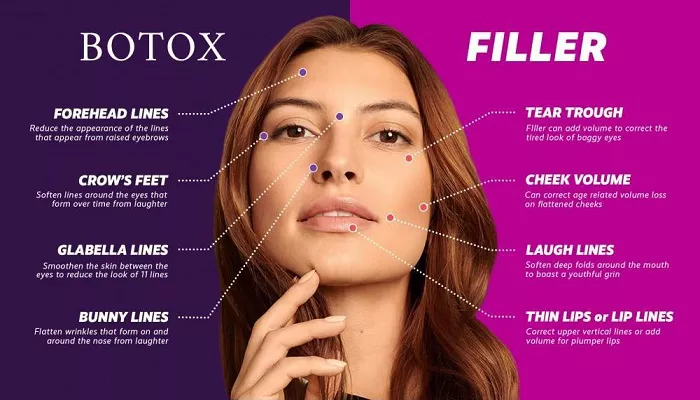Choosing the right dermal filler for your face can be overwhelming with so many options available. The “best” filler depends on your specific concerns, facial anatomy, and desired results. This comprehensive guide will help you understand different filler types, their ideal uses, and how they compare to other non-surgical facial rejuvenation treatments.
What is Dermal Fillers
Dermal fillers are injectable gels that restore volume, smooth wrinkles, and enhance facial contours. They typically contain hyaluronic acid (HA), a naturally occurring substance in your skin.
How Fillers Work
Fillers work by:
- Plumping up sagging skin
- Smoothing out wrinkles and folds
- Restoring lost facial volume
- Enhancing natural features
Best Fillers for Different Facial Areas
1. Cheeks and Midface
Best options: Juvederm Voluma, Restylane Lyft, Radiesse
These thicker fillers provide structural support to lift sagging cheeks and restore youthful volume.
2. Lips and Smile Lines
Best options: Restylane Kysse, Juvederm Ultra, Belotero Balance
Softer, more flexible fillers create natural-looking lip enhancement and smooth perioral wrinkles.
3. Under Eyes
Best options: Restylane Refyne, Belotero Soft
Light, fluid fillers minimize hollows without causing puffiness or visible lumps.
4. Jawline and Chin
Best options: Radiesse, Sculptra, Juvederm Volux
Firmer fillers create definition and improve facial proportions.
5. Nasolabial Folds
Best options: Juvederm Ultra Plus, Restylane Defyne
Medium-density fillers soften deep smile lines while maintaining natural expression.
Hyaluronic Acid vs. Other Filler Types
Hyaluronic Acid Fillers
Pros: Reversible, natural-looking, minimal downtime
Cons: Temporary (6-18 months), may cause swelling
Calcium Hydroxylapatite (Radiesse)
Pros: Stimulates collagen, lasts 12-18 months
Cons: Not reversible, firmer feel
Poly-L-Lactic Acid (Sculptra)
Pros: Gradual, natural-looking results, lasts 2+ years
Cons: Requires multiple sessions, delayed results
PMAA Hydrogel (Bellafill)
Pros: Permanent results
Cons: Higher risk of complications, not adjustable
Latest Advancements in Facial Fillers
1. New HA Formulations
Innovative products like Juvederm Volux and Restylane Contour offer better tissue integration and more natural movement.
2. Bio-Stimulatory Fillers
Fillers like Sculptra and Radiesse stimulate your body’s own collagen production for longer-lasting results.
3. Combination Approaches
Many practitioners now combine different filler types for customized, multidimensional rejuvenation.
Filler Safety and Potential Risks
Common Side Effects
- Temporary swelling and bruising
- Redness at injection sites
- Mild tenderness
Rare Complications
- Vascular occlusion (blocked blood vessel)
- Infection
- Nodules or granulomas
How to Minimize Risks
- Choose an experienced, qualified provider
- Follow all pre- and post-care instructions
- Start conservatively with new treatments
Maintaining Your Results
Follow-Up Treatments
Most HA fillers require touch-ups every 6-18 months depending on the product and area treated.
Skincare Regimen
Quality skincare can extend your results:
- Sun protection (SPF 30+ daily)
- Retinoids for collagen production
- Antioxidants to prevent damage
Healthy Lifestyle
Factors that affect filler longevity:
- Hydration
- Nutrition
- Stress management
- Sleep quality
Conclusion
The best facial filler for you depends on your unique facial structure, aging concerns, and desired outcomes. Hyaluronic acid fillers remain the gold standard for their safety profile and natural results, but newer options like collagen-stimulating fillers offer longer-lasting benefits. For comprehensive facial rejuvenation, many patients benefit from combining fillers with other non-surgical treatments like energy-based devices or micro plastic surgery alternatives. Always consult with an experienced, board-certified provider to create a personalized treatment plan that meets your aesthetic goals while prioritizing safety and natural-looking results.
Related topics:


